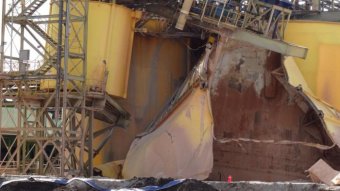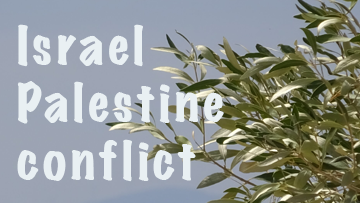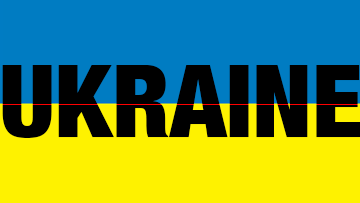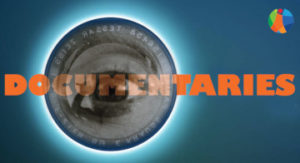IN THE EARLY HOURS of December 7, a crack appeared in a large leach tank in the processing area of the Ranger uranium mine in Kakadu National Park. The area was evacuated, the tank completely failed, the containment system was inadequate and one million litres of highly acidic uranium slurry went sliding downhill — taking Energy Resources of Australia’s credibility with it.
The spill has left traditional owners who live and rely on creeks only kilometres downstream angry and “sick with worry” and raised profound concerns about the management culture and integrity of infrastructure at the mine.
Operations at Ranger are now halted. The mine operates inside Kakadu National Park — Australia’s largest park and a dual World Heritage listed region. It, and its people, deserve the highest standards of protection, but sadly Ranger is a long way short of this.
The Australian uranium industry has long been a source of trouble. Now it is increasingly in trouble. The commodity price has collapsed, projects across the country have been stalled, deferred or scrapped and the recent Kakadu spill has again raised community attention and concern.
Business as usual in a most unusual business is not an option and there is an urgent need for an independent review. For those who make judgements on the basis of evidence rather than enthusiasm the alarm bells have been ringing loud for a number of years.
In March 2011, the world held its breath and the name Fukushima entered the global vocabulary. Fukushima means ‘fortunate island’ but the region’s luck melted down along with the reactors at the Fukushima Daiichi nuclear plant following the earthquake and tsunami.
The continuing Fukushima nuclear crisis was a game changer — not just for the hundreds of thousands of people directly affected whose lives will never be the same, but for the global nuclear industry. The industry has since witnessed the death of its public-relations-fuelled dream of a nuclear ‘renaissance’.
In October 2011 the director of the Australian Safeguards and Non-Proliferation Office formally confirmed to the Senate “that Australian obligated nuclear material was at the Fukushima Daiichi site and in each of the reactors”.
Fukushima started inside a big yellow truck in Australia. Rocks dug up in Kakadu and northern South Australia are the source of the radioactive fallout now spread across Japan and well beyond — wandering in the winds, circulating in the currents.
And, appropriately, the market fallout from Fukushima has hit the industry hard. For a year the industry response was a combination of wait and see. Now it is increasing pack and run.
Market slow-down
The uranium price has fallen around 50 per cent since Fukushima and the share price of most of the uranium producers and players — including Paladin Energy, Energy Resources of Australia and Toro Energy — has kept it company on the way down, and then some.
With the uranium commodity price showing no sign of recovery, one of the sectors most enthusiastic promoters delivered a blunt verdict at an industry conference in Fremantle in July. John Borshoff, the head of Paladin Energy a company that, failing to get a mine up in Australia has moved operations to Africa, had a clear message: “the uranium industry is definitely in crisis”.
This vote of no-confidence has been echoed and played out across the wider Australian industry.
Last year BHP Billiton, the world’s biggest mining company, pulled away from a plan to commit over $20 billion to a massive new development at its Olympic Dam mine in northern South Australia. Despite sweetheart deals and a raft of government favours, the then BHP boss Marius Kloppers cited the “soft” uranium price and the “uncertain” future of the uranium market as a primary reason for the decision to put the plans on ice.
In a true case of voting with your steel capped feet, BHP went further, selling its undeveloped uranium assets in Western Australia and disbanding its dedicated uranium unit.
More recently, one of Australia’s few approved and operating mines closed its doors. In November, the Honeymoon mine in South Australia ceased production and moved to extended care and maintenance status, again citing the poor uranium price.
Hard on the heels of this came the news that Marathon Resources, a uranium junior which had big ambitions to develop a mine in SA’s gorgeous Gammon Ranges had instead decided to give the entire uranium game away, declaring the sector’s “risks are more likely to exceed rewards” (pdf).
And in Queensland, uranium hopefuls and the Australian Uranium Association are in closed door dialogue with the LNP state government seeking ‘royalty relief’, before they have even lodged an application to mine. Hardly the sign of a buoyant economic trade.
For the uranium sector it really does look like the Honeymoon is over and the Marathon is finished. And just as the sector was limping to the line for season 2013 the danger of Ranger became clear to all.
The most recent independent assessment of the Australian uranium industry — a Senate Inquiry in October 2003 — found the sector was characterised by underperformance and non-compliance, an absence of reliable data to measure contamination or its impact on the environment and an operational culture focussed on short term considerations.
Uranium mining is a high-risk, low-return sector that poses unique, unresolved and long-lived threats and does not enjoy secure social license. It is time for our politicians to stop accepting industry promises and start genuinely examining industry performance.
The uranium sector in Australia and internationally is cutting costs and cutting corners, the risks are growing and we have enough warnings. Now we need some action.
Seeking to assuage community concern after the Ranger spill federal Resource Minister Ian Macfarlane stated last week, “what we need to do is just have a process where the facts can be laid on the table.”
We agree. It’s called an independent public inquiry into the costs and consequences of Australia’s troubled uranium industry.
http://www.abc.net.au/environment/articles/2013/12/18/3913291.htm
Dave Sweeney is Nuclear Free campaigner for the Australian Conservation Foundation.










